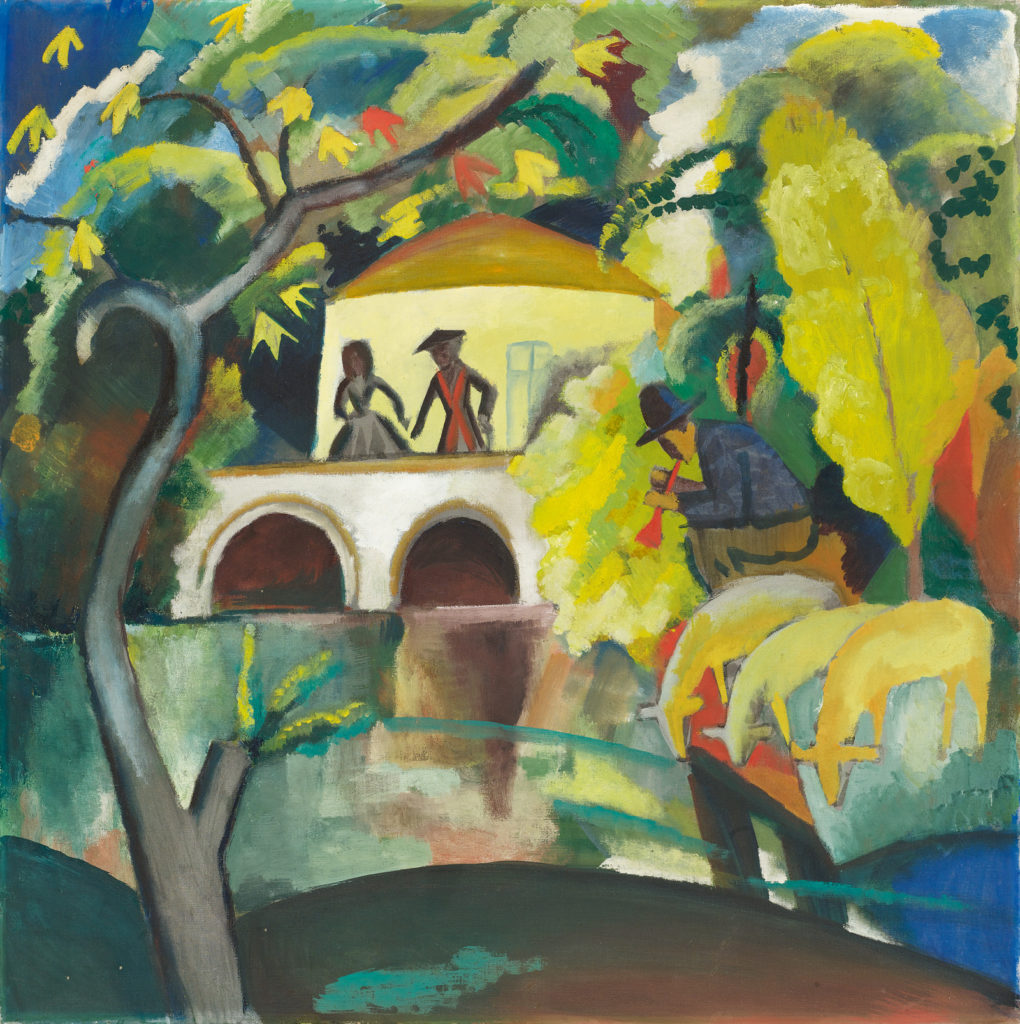Rokoko

Although August Macke (1887-1914) only lived to be 27 years old, he managed to develop an independent and original idiom and played a significant role in the development of the most modern and progressive painting in Europe at the onset of the 20th century.
Together with Franz Marc, Gabriele Münter and Wassily Kandinsky, among others, he co-founded the artist groupDer Blaue Reiter inMunich in 1911. The artists were indisputably influenced by Fauvism, and they were particularly preoccupied with Matisse’s highly developed palette and emphasis on the picture’s to-dimensional character. Their style was closely related to the rather elegant and subdued form of French Expressionism. One can thus view August Macke andDer Blaue Reiter as a counterpart to the rougher and more volatile form of Expressionism as it was expressed by their contemporary colleagues Schmidt-Rottluff, Kirchner and others in the Dresden-based artist groupDie Brücke (1905-13). Nevertheless, in the writing of art history since then, bothDer Blaue Reiter andDie Brücke have equally been called “German Expressionism”.
Rococo(1912) is among Macke’s largest and most fully developed compositions. In the picture’s foreground, among trees and bushes, a shepherd boy sits in stiff profile playing a trumpet-like wind instrument. It is presumably a decoy, which were often used by shepherds to either frighten or lure their flocks. Just below him, three sheep are symmetrically arranged and grazing peacefully. In the background we see two figures, what appear to be a man and a woman, dressed in historic costumes and placed above an archway in front of a simple, yet elegant building. Conceivably an old castle. The whole scene is situated in rural surroundings and framed in by lush vegetation. An idyllic presentation of humans and animals, often shepherds, in scenic surroundings of this kind is called a pastoral and has a long tradition in art history. During the Rococoperiod, the pastoral experienced explosive popularity as an art genre. Macke’s reference to this historical period during the 18th century seems a bit strange at first glance. The Rococo style, as we know, originated in France and is associated first and foremost with the reign of Louis XV, when the pre-modern, strictly divided class society still prevailed. It might seem paradoxical that Macke, an avant-garde expressionist, appears at the beginning of the 20th century to be interested in this period, which seemingly represents a view of society and mankind that is in stark contrast to the modernist project he was a part of. Macke lived during a time of rapid upheavals, when society, with all of its innovations and optimism for the future, was also marked by deep-seated insecurity and uneasiness regarding the new, and what the future would bring. As for many other contemporary artists, writers and philosophers, his artistic project can also be said to encompass this ambiguity. On the one side,Rococo can be perceived as a celebration of modernity and society’s rapid development, and on the other, as an expression of a longing to return to a simpler, more stable and organic lifestyle; the title and motif reflect a romantic perception of a lost past, while the formal elements contribute in characterising ‘modernity’, and auger a new era.
August Macke participated in the prestigious Sonderbund exhibition inColognein 1912 – whose main goal was to show an general presentation of international modern art – with five paintings. Among them wasRococo, which was painted the same year. The painting was sold at the exhibition and has since been in private ownership inGermany. During the years 1977-2000 it was on loan at Städtische Kunsthalle inMannheim. The painting was acquired by the Savings Bank Foundation in the spring of 2010 and is now on loan at theNationalMuseuminOslo. This acquisition marks the beginning of the Savings Bank Foundation’s endeavours to build up a collection of German expressionists.
OWG